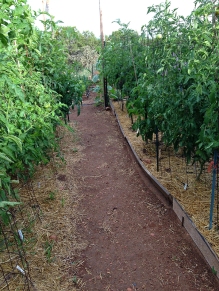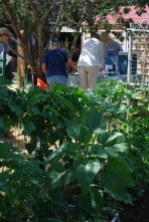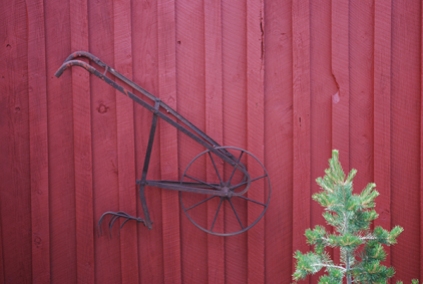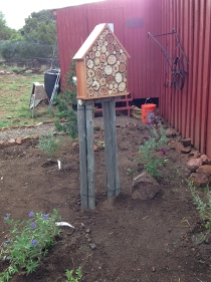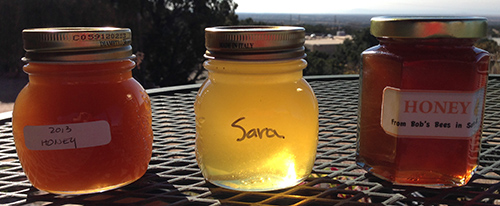
Yea! Here is Caleb's top bar hive this morning
For 2 years I’ve been waiting for one of my beekeeping friends to bring over one of their hives but no one had any extra bees or top bar hive to bring. I’ve wanted bees to help with pollination in my veggie garden and thought what a great relationship that would bee. My friends get space to put their hive and I get pollinators. I promise not to use chemicals that will harm the bees and will give them water. I didn’t think I would be interested in bees that much. I don’t want to take care of more things. I’m already overloaded. I just want pollinators and they can do the beekeeping thing. But still, I’ve wanted them.

closeup top bar hive this morning
So last week I was ecstatic when Caleb, a friend of mine, told me he would move his hive here to the garden area. Finally. Yea! I’ve been waiting with great excitement all week for him to come not quite knowing what to expect. Caleb is a 3 year beekeeper and I can tell by the way he talks about his bees that he’s good and he cares about them. Yea, like children-all 10,000 of them! (the hive will grow to around 50,000 this summer)
Yesterday afternoon he came over and scoped out the property to see where he wanted to keep his bees. He picked out a lovely site that was nestled in some trees facing southeast (that is the direction they want to fly out in the morning) plus they will get protection from the hot west sun and wind this summer. They would be within 50 feet of the vegetable garden. Excellent! He decided to put the top bar hive up on a stand he built. He dug a hole at the site and buried his stand so the top bar hive won’t blow away during our high wind periods. Then we had dinner and off he went to pick up his bees at sunset after they came home to the hive.

water for bees
While he was gone, I brought down a bowl of water and put some twigs halfway in it so the bees can walk down the twigs to get to the water. Caleb said you have to move bees at night because when they come out in the morning they will have to recalibrate their internal GPS so they can find the hive again by the end of day. He came back an hour after dark and he had the top bar hive with the bees inside covered with a towel in the back of his truck. They were upset about the bumpy ride on our dirt road. How do we know? Because they were LOUD! They were humming loudly and sounded upset-no actually they sounded pissed. Glad the towel was covering the hive. So he let them settled down and once they were quiet he picked up the box and with flashlights we took them to their new place. After we got there and Caleb attached the top bar to the stand, a few bees came out just inside their entry hole to check it out but they stayed in. Wonder what the neighbors thought last night with us walking all over the property with flashlights carrying a coffinlike box! I’ll have to show them the bees!

First bee out on top of top bar hive exploring it's new surroundings
This morning was cold (about 38°F) so only a few of the bees came out to explore. While I’m working, they will come out when it is warmer. I hope they like their new property!
Later today, Caleb will come back and put up some plywood to protect the hive from rain (hah! fat chance of that) and he needs to put on their ‘porch’ that they like to land on when entering or leaving the hive. I wonder if bees have an air traffic controller for take offs and landings?! Perhaps they do have an air traffic controller. Perhaps our traffic controllers could learn a thing or two from their traffic controllers. I can see this is gonna be fun! I’m learning a lot from Caleb. Bees are fascinating creatures with an incredibly structured society. Caleb said they can follow the sun even when it is on the other side of the earth with their GPS-how cool is that?! Looks like I’m going to need a bee hood soon to learn more..











